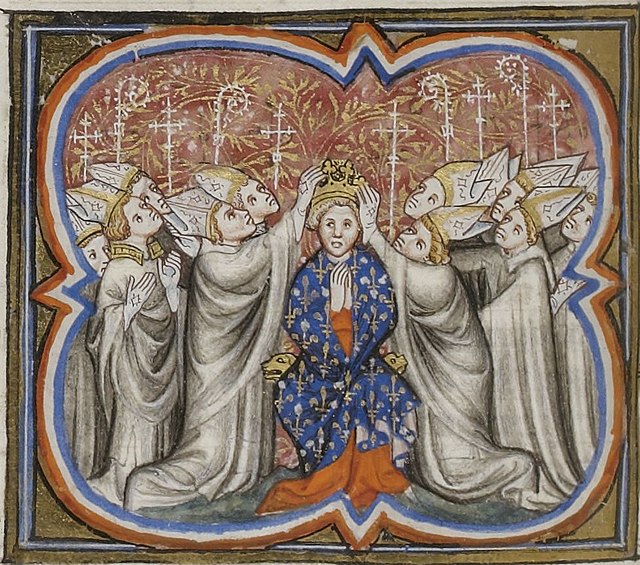The Battle of Bouvines was fought on 27 July 1214 near the town of Bouvines in the County of Flanders. It was the concluding battle of the Anglo-French War of 1213–1214. Although estimates on the number of troops vary considerably among modern historians, at Bouvines, a French army commanded by King Philip Augustus routed a larger allied army led by Holy Roman Emperor Otto IV in one of the rare pitched battles of the High Middle Ages and one of the most decisive medieval engagements.
La Bataille de Bouvines, by Horace Vernet in 1827. (Galerie des Batailles, Palace of Versailles).
Pre-battle dispositions.
The capture of Ferdinand, Count of Flanders in an illustration of the battle made around 1330.
Ferrand of Flanders and Renaud of Boulogne being conveyed as prisoners to Paris (from the Grandes Chroniques de France, c. 1375–1380). Ferrand was released in 1227 and died soon after of a disease contracted in prison. Renaud was kept in chains and committed suicide in 1227.
Philip II, byname Philip Augustus, was King of France from 1180 to 1223. His predecessors had been known as kings of the Franks, but from 1190 onward, Philip became the first French monarch to style himself "King of France". The son of King Louis VII and his third wife, Adela of Champagne, he was originally nicknamed Dieudonné (God-given) because he was a first son and born late in his father's life. Philip was given the epithet "Augustus" by the chronicler Rigord for having extended the crown lands of France so remarkably.
Seal of Philip II. The legend reads: phillipvs dei gratia francorvm rex ("Philip, by the grace of God, king of the Franks")
Isabelle, Philip's first wife (by the "Maître de Rambures" [fr], c. 1450–1475)
The coronation of Philip II Augustus (from the Grandes Chroniques de France, c. 1332–1350)
Philip II enthroned, portrait by Jean du Tillet, 1555–1566






![Isabelle, Philip's first wife (by the "Maître de Rambures" [fr], c. 1450–1475)](https://upload.wikimedia.org/wikipedia/commons/thumb/5/55/Izabela_hainaut2.jpg/425px-Izabela_hainaut2.jpg)

